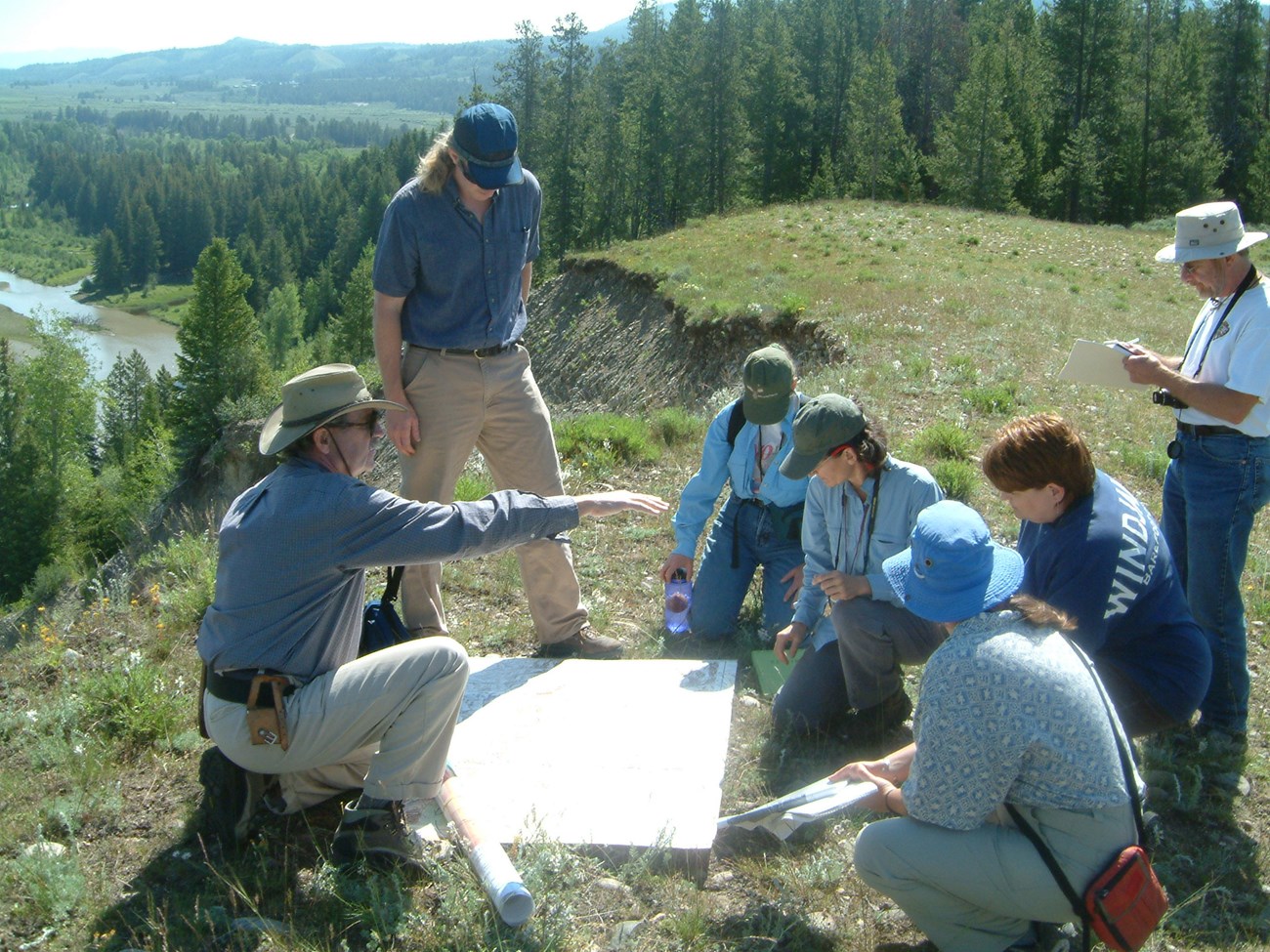
NPS photo.
The Geologic Resource Inventory (GRI) is one of 12 natural resource inventory efforts within the National Park Service (NPS) Inventory and Monitoring Program. The Program is a cooperative effort between the NPS and Colorado State University. It strives to advance science based management of natural resources in the national parks and raise awareness about geology and the role that geologic features and processes play in the environment.
Products
The GRI team, working closely with a variety of partners, provides each of the 270 natural area parks with a geologic scoping meeting, digital geologic map data and poster, and a park-specific geologic report. These products are designed to enhance stewardship of park resources by providing valuable information about geologic formations, hazards, and links between geology, history, and other natural resources. The maps and reports are available for free on the GRI publications page.
About GRI Products
Following the meeting, a scoping summary is produced. The summary document details the main points of the meeting and lays out the geologic mapping plan. While early scoping summaries focused primarily on geologic map issues, more recent summaries also include outlines and discussions of geologic issues, features, and processes. The summaries also include a list of meeting participants.
Digital geologic maps reproduce all aspects of traditional paper maps, including notes, legend, and cross sections. The GRI may use bedrock, surficial, and special purpose maps such as geomorphological or geologic hazard maps to create digital data and meet park needs. This product allows geologic information to be easily viewed or analyzed in conjunction with a wide range of other resource management information in park geographic information systems (GIS).
- Geologic maps are digitized and/or converted to the GRI data model.
- GIS data is produced in ESRI Geodatabase and Shapefile formats.
- A helpfile (.hlp format) or PDF document accompanies each map and includes all aspects of the original source products, including the geologic units and their descriptions, geologic cross sections, the geologic report, references and all other pertinent images and information contained in the original publication.
- A printable wall map is prepared for easy (and attractive) reference.
After the geologic map is completed, a geologic report is prepared. GRI reports contain five major sections:
- Identification and description of key geologic resource management issues;
- Discussion of geologic features and processes important to park ecosystems and management;
- A map unit properties table that identifies characteristics of geologic map units;
- A brief geologic history of the park area; and
- An overview of the digital geologic map data.
Related Links
Status
View current status of scoping meetings, geologic reports, and digital geologic map data. [site removed, contact us for status information]
Park Uses of Geologic Information
Geologic Maps in Action—Discover Connections [Site Under Development]
Geologic Maps in Action—Document Change [Site Under Development]
Other Examples
-
Sequoia and Kings Canyon National Parks - Document glacial response to climate change
-
Buffalo National River - Explore groundwater and karst interaction
-
Dinosaur National Monument - Identify threatened plant habitat
-
Coronado National Memorial - Locate threatened animal habitat
-
Yosemite National Park - Identify areas with rockfall potential
Geologic Resource Laws, Regulations, and Policies
The NPS Geologic Resources Division developed this article series to summarize laws, regulations, and policies that specifically apply to NPS minerals and geologic resources.
Related Links
-
Learn About Geologic Maps [Site Under Development]
For more information, contact us.
Last updated: December 11, 2024
